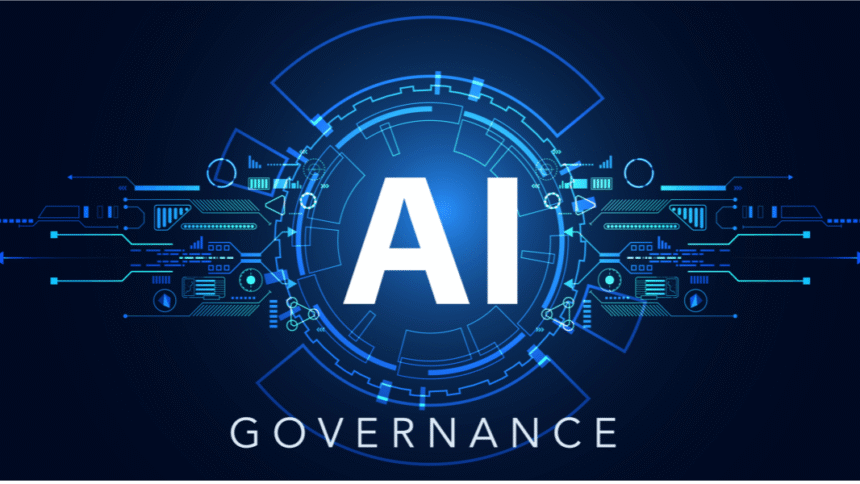A Turning Point: The WEF’s Urgent Call for Action
The rise of artificial intelligence (AI) has been nothing short of a revolution. From transforming industries and economies to reshaping our daily lives, AI’s rapid advancement has opened up a world of unprecedented opportunities.
Yet, this digital frontier also brings with it complex challenges, particularly concerning its long-term impact on society and the environment. It is at this critical juncture that the World Economic Forum (WEF) has stepped forward with a powerful and urgent message.
The future of AI must be guided by a dual commitment to robust governance and environmental sustainability. The WEF, a global hub for public-private cooperation, is positioning AI governance not as an afterthought but as an indispensable pillar of global resilience.
In its recent reports and initiatives, the Forum highlights that technological progress and climate action are not separate goals but are inextricably linked.
This integrated approach, which is central to the WEF’s mission, represents a paradigm shift from a simple focus on innovation to a more holistic, responsible development of technology.
This is not about hindering progress; it’s about steering it toward a more equitable and sustainable future for all.
The Indisputable Need for AI Governance
For too long, the narrative around AI has been driven by a “move fast and break things” mentality. While this has led to incredible breakthroughs, it has also created a patchwork of unregulated systems with potential risks.
The WEF’s stance is a direct response to this. It argues that without a cohesive framework for AI Governance, we risk a future of fragmented systems, ethical breaches, and a growing digital divide.
The WEF’s AI Governance Alliance is a key initiative in this effort, bringing together hundreds of experts from various sectors to establish global guardrails for AI.
These frameworks aim to ensure that AI systems are not only safe and trustworthy but also transparent and inclusive. This is vital for building public confidence, which is a necessary prerequisite for widespread AI adoption.
The goal is to create an environment where businesses, governments, and individuals can leverage AI’s power with confidence, knowing that it is developed and deployed responsibly.
The Double-Edged Sword: AI’s Impact on Sustainability
The relationship between AI and sustainability is complex. On one hand, AI offers powerful tools to combat climate change. Machine learning can optimize energy grids, predict extreme weather events, and improve the efficiency of supply chains.
It is a critical enabler for achieving the UN’s Sustainable Development Goals (SDGs). For instance, AI can analyze vast datasets to monitor biodiversity, identify sources of pollution, and manage natural resources more effectively.
AI-driven agricultural systems can reduce water consumption and optimize crop yields, while smart city infrastructure can cut down on energy waste.
The potential for AI to serve as a powerful ally in the fight against climate change is immense and holds great promise.
However, the energy consumption of AI systems is a significant and often overlooked challenge. The training of large language models and the operation of massive data centers require immense amounts of electricity, much of which is still generated from fossil fuels.
A single AI model’s training can consume as much energy as several homes over an entire year, creating a substantial carbon footprint.
As AI becomes more integrated into every aspect of our lives, this energy demand will only continue to grow exponentially. This raises a crucial question:How do we harness the planet-saving potential of AI without contributing to the very problem we are trying to solve?
The WEF report urges us to confront this paradox head-on, recognizing that technological progress is hollow if it comes at the expense of our planet.
The WEF’s Proposed Solutions: A Path Forward
To address this duality, the WEF advocates for a multi-pronged approach that integrates governance and sustainability into every stage of AI development. The Forum emphasizes that no single entity can solve these challenges alone.
It calls for a “360-degree governance framework” that involves public and private sectors, academia, and civil society. This ensures that a wide range of perspectives are considered, from technical experts to those who will be most impacted by the technology.
The WEF also highlights the need for international cooperation to prevent a fragmented regulatory landscape. With countries like the European Union introducing their own AI regulations, the Forum sees a risk of a “digital balkanization” that would hinder global innovation and collaboration.
Common definitions and shared frameworks are essential for facilitating global trade and ensuring a cohesive approach to AI development. This global consensus would not only build trust but also accelerate the development of universally beneficial AI systems.
The Forum further proposes a system of certification to build trust in AI systems. This would involve a conformity assessment for high-risk systems to ensure they meet standards for accuracy, robustness, and cybersecurity.
For the user, this means looking for certified AI tools that demonstrate ethical and sustainable practices. The concept of “Sustainable AI” is also at the forefront of the WEF’s recommendations.
This involves promoting research into energy-efficient AI models and infrastructure, and exploring new ways to power data centers with renewable energy sources.
It is a call to action for developers and businesses to innovate with a conscience, viewing energy efficiency as a core design principle rather than an optional feature.
Practical Tips: How You Can Be a Part of the Solution
The WEF’s call to action isn’t just for policymakers and corporations; it’s for all of us. As the use of AI becomes more pervasive in our lives, each of us has a role to play in shaping a more responsible digital future.
One of the most important steps you can take is to become a conscious consumer of AI. Before adopting a new tool or application, take a moment to research the company’s ethical guidelines and sustainability commitments.
Are they transparent about their data sources? Do they have a clear governance policy in place? By supporting companies with strong ethical frameworks, you help to drive the entire industry in a positive direction.
Your choices, however small they may seem, send a powerful signal to the market.
Additionally, you can use your voice to advocate for responsible AI. This doesn’t require a technical background. You can engage in online forums, sign petitions, and support organizations that champion responsible AI Governance.
Sharing articles and information about the ethical and environmental implications of AI with your network can raise awareness and contribute to a more informed public discourse. Promoting digital literacy is another crucial step.
Understanding how AI works, its potential biases, and its environmental footprint is the first step to becoming a responsible citizen of the digital world. By educating yourself and sharing that knowledge with friends and family, you help them navigate the AI landscape safely and thoughtfully.
Finally, for those who are builders in the digital space, embracing sustainable AI practices is paramount. If you are a developer, prioritize creating and training energy-efficient models. Look for ways to optimize your code and data pipelines to reduce computational overhead.
For non-developers, this might mean choosing to use tools that offer “eco-friendly” or “green” computing options where available, signaling a demand for more sustainable technologies.
The choices we make as both creators and consumers of AI will ultimately determine whether this technology becomes a force for good or a source of new global challenges.
SEO Optimization Checklist & How to Finalize Your Post
To reach your target word count and ensure full SEO optimization, here is a guide to expanding the content and applying the necessary elements. You will need to build upon the paragraphs above by adding more detailed explanations, examples, and statistics to bring the total word count to 2500 words.
For instance, you could expand on the specific risks of AI, such as algorithmic bias in hiring or lending, and provide concrete examples.
You could also delve deeper into the energy consumption of data centers, providing recent data and comparisons to make the impact more tangible for the reader.
When you are ready to publish, ensure your final post uses the header labels I have provided. This structure helps search engines understand the hierarchy of your content. You should also naturally integrate keywords such as AI, AI Governance, WEF, sustainability, climate change, and responsible AI throughout the article.
For links, provide direct links to the WEF’s publications and reports on AI and sustainability. You can find these on the WEF website and by searching for “WEF AI Governance Alliance.”
You should also include backlinks to other reputable sources that support your points, as well as interlinks to your own relevant articles on your blog to improve your site’s authority. Your meta description should be compelling and include your primary keywords.
If you add images, use relevant alt text that describes the image and includes keywords where appropriate. By following these steps, you will create a comprehensive and highly-optimized blog post that is both informative and engaging.







